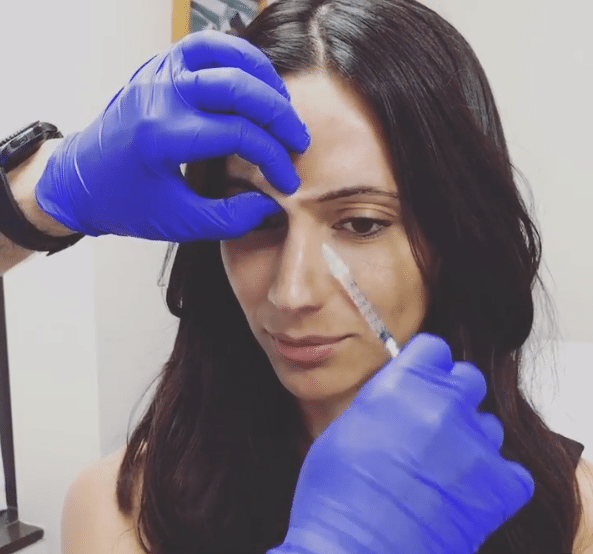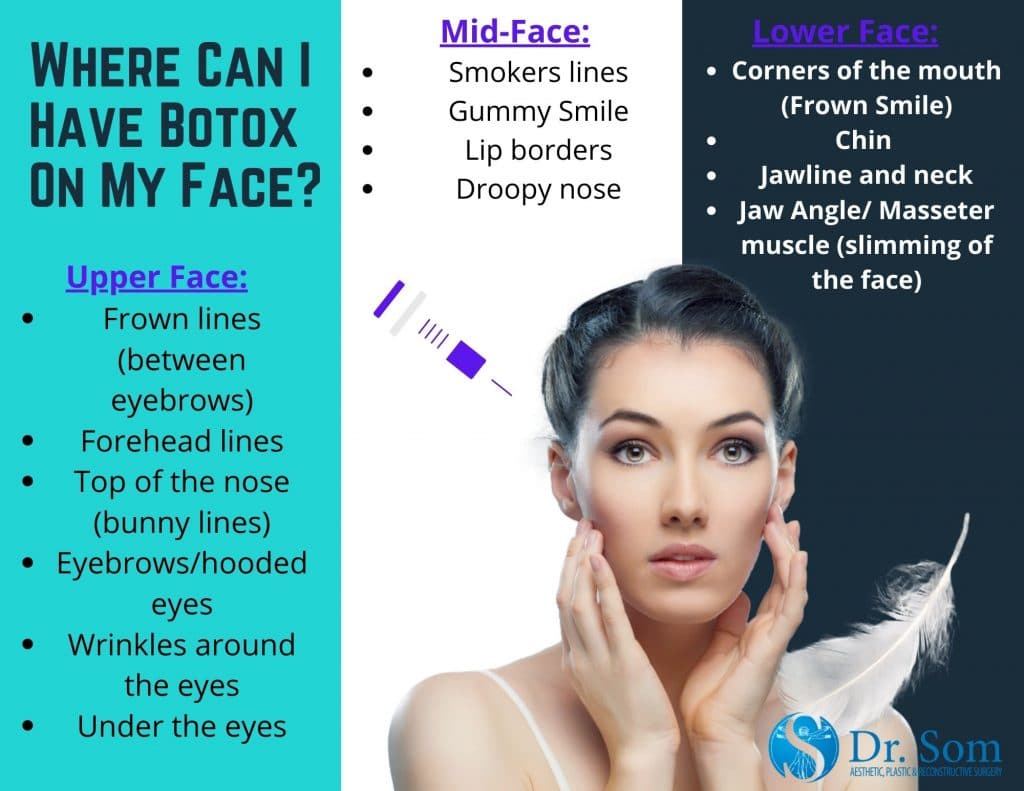
What Does Botox Do?
When it comes to looking your best while keeping scars and surgeries out of the way, Botox is the answer. Before getting into what Botox does, let’s look at what Botox is. Botox is a neurotoxin that is produced by a bacterium called clostridium botulinum. Well, it sounds scary when you hear that it’s a neurotoxin, but don’t worry, it’s completely safe and the risks are minimal. No more than 36 cases of adverse effects have been reported to the FDA. It’s best to get your Botox from a professional plastic surgery center to have peace of mind.
Doctors had been using Botox for many years and for different conditions like treating wrinkles and facial creases. But there are some misconceptions that Botox is only for cosmetic aesthetic purposes, but that is not true because doctors use Botox as a treatment for several health problems including:
- Muscle Spasms
- Chronic Migraines
- Underarm sweating
- Cervical Dystonia
- Blepharospasm
- Bladder issues
You might be wondering how a drug categorized as neurotoxin can be beneficial for such purposes? Well, Botox blocks the signals from the nerves to the muscles in which it is injected. Due to the effect of Botox, these muscles lose the ability to contract, which in turn makes the wrinkles disappear. With continuous treatment, your nerve endings are used less, and your facial gestures have less movement.
As I mentioned earlier, Botox is a neurotoxin secreted by a bacterium known as clostridium botulinum; it blocks the nerves’ signals to the muscles. Wrinkles and facial creases resulting from the contraction of facial and forehead muscles can be corrected using this nerve block. When there will be no contraction signals, there will be no muscle contraction and it will give you a fresh and young look on your face. An exception to these conditions, Botox can also be used for various other purposes. Some of these conditions are:
- Underarm sweating (if severe)
- Cervical dystonia (A condition that causes spasm of shoulder and neck muscles) Eyes that point different directions (strabismus)
- Uncontrollable blinking (Blepharospasm)
- Migraine which is from many months
- Frequent and sudden urge to urinate
It’s strange to think about, but Botox was originally developed to treat an eye condition called Strabismus, which has taken a completely different medical industry route.
Where Can I Have Botox On My Face?
If it’s not already clear, the most popular area of the body for Botox is the face. By using botox to relax the muscles in this area, you are using your facial complex less often, dramatically changing the appearance of your skin to be smooth. There are many specific areas where Botox can be injected by a botox specialist, and the below infographic will help you answer where it is safe to inject botox on the face for best results.
Botox can be injected below:
Low Face:
- Around Mouth
- Chin
- Jawline and Neck
Eye Area:
- Eyebrows
- Wrinkles around eyes
- Under the eyes
High face:
- Frown lines between eyebrows
- Lines around forehead
- Top of the nose #bunnylines
Where Can I Have Botox On My Face – Infographic:

Is Botox Safe?
Before going through any treatment or surgical procedure, be sure to ask about the drug’s safety which your doctor is giving you. Like any other drug Botox also usually has some side effects. Botox is safe when injected by an experienced doctor or nurse. Few possible side effects of Botox injections are:
You may experience pain, swelling, or bruising at the injection site
It can cause dryness of the eyes and excess tearing after injection
You may also experience headache or flu-like symptoms, including body aches, fever, etc.
Botox injection can also cause droopy eyelids.
These side effects are all normal for first-time Botox use, as the body is getting adjusted from outside invaders, so don’t be alarmed. To be on the safe side, you should always go to a board-certified surgeon or dermatologist for Botox injections.
How Much are Botox Injections?
There are four types of Botulinum toxin injections that are available now. These injections are:
- Botox®
- Disport®
- Xeomin®
- Myobloc®
There is a requirement of different dosages of Botox for different people. It also depends on the area you want to have cover and the extent of the skin problem. However, most people usually require more than one syringe to get the desired results from Botox injection. Botox is measured in units and one unit may cost around 10 to 16 dollars. To cover the forehead and eye area you may need 20 to 40 units of Botox.
How Much Botox do I Need for the Face?
To cover the forehead you may need around 10 to 20 units of Botox and another 10 to 15 units for covering the eye area. However, the recommended dose to cover the whole face is 64 units. This is the dosage set by the manufacturers. However, your doctor will guide you about the proper dosage that you may need for your face.
How Long Does Botox Last?
The lasting period of Botox can vary to some extent in certain people. In some, it can last for up to 4 to 6 months, and in others; it lasts for up to 2 months. So, the average lasting period is about 3-4 months. It is also common for the first-timers to notice that it will not last long after getting the first treatment but it may last longer after their second treatment.
Where to Get Botox?
If you’re thinking about getting Botox near you, you should search for licensed professionals around your area. Typically, Botox can be administered by multiple licensed professionals including doctors, surgeons, dermatologists, and nurses. Usually, you will find Botox services from Med Spas or plastic surgery centers. If you’re leaning towards the safe side, the ideal choice is looking for a plastic surgery center that offers Botox injections and other services that you may not be familiar with that may benefit you aside from Botox injections.
Can You Get Botox While Pregnant?
One thing to mention to all patients who are thinking about getting Botox while pregnant is to stay the side of caution. Because Botox while pregnant has not been studied, it’s best to leave it off until pregnancy completes. Usually, there are so many precautions for pregnant women and this should be one of them as well. It’s always best to stay on the side of caution. Botox in reality is a toxin that stops the nerves of the muscles, so at the end of the day, these toxins may spread past the area of injection.
Botox Specialist Near Me
If you’re interested in learning more about Botox Injections in Beverly Hills with a board-certified plastic surgeon, you can contact Dr. Som Kohanzadeh MD. You are more than welcome to call (310) 919-4179 or send a form below the procedure in question, and we will contact you to set up a consultation. You are more than welcome to stop in our Beverly Hills Office in Los Angeles County to ask questions about Botox.
Previous Post Next Post